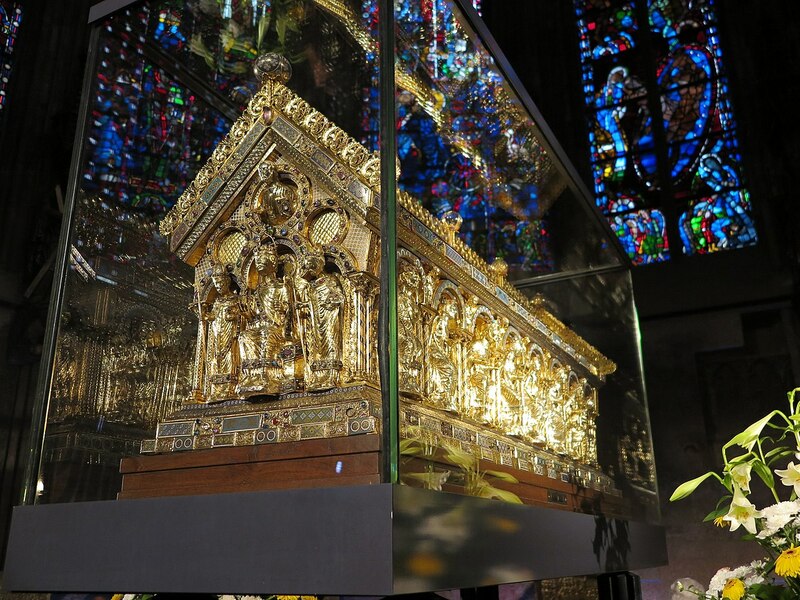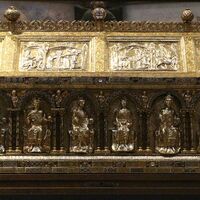Karlsschrein
Type:
Reliquaries
Date:
ca. 1182 to 1215
Location or Findspot (Modern-Day Country):
Germany
Medium:
Enamel,
Gems,
Gilt-silver,
Gold,
Wood
Dimensions:
94 × 204 × 57 cm
Description:
The Karlsschrein (Shrine of Charlemagne) is the reliquary made to commemorate Charlemagne's canonization in 1165 (an act not affirmed by subsequent popes). King Frederick II (not yet the Holy Roman Emperor) personally moved the bones of his predecessor and sealed the shrine (begun ca. 1182) in 1215. The front, gabled end of the basilica-shaped shrine shows Charlemagne enthroned below a medallion of Christ and between a pope and an archbishop. On the back, Mary is enthroned between angels and below personifications the cardinal Christian virtues, Faith, Hope, and Love. The sides of the shrine depict enthroned emperors, starting with Charlemagne's son Louis "the Pious" and ending with Frederick II. On the sloping roof are scenes from a twelfth-century account of the life of Charlemagne. The shrine was originally displayed beneath the dome of the Aachen palace chapel under the chandelier donated by Frederick I.
When the shrine was opened in the nineteenth century, the bones inside it belonged to a man over 2 meters tall, which more or less accords with the account of Charlemagne's biographer, Einhard, that the emperor was "seven feet tall"—an exceptional height for the Middle Ages. The long Latin metrical inscription above and below the figures in arcades begins, "You were the light, the gem of the Church of Christ, Charles, the flower of kings, the ornament of the earth and the path of the laws."
When the shrine was opened in the nineteenth century, the bones inside it belonged to a man over 2 meters tall, which more or less accords with the account of Charlemagne's biographer, Einhard, that the emperor was "seven feet tall"—an exceptional height for the Middle Ages. The long Latin metrical inscription above and below the figures in arcades begins, "You were the light, the gem of the Church of Christ, Charles, the flower of kings, the ornament of the earth and the path of the laws."
Relevant Textbook Chapter(s):
8
Repository and Online Resources:
• The inscription is transcribed and translated (into German) here.
Image Credits:
Wikimedia Commons



